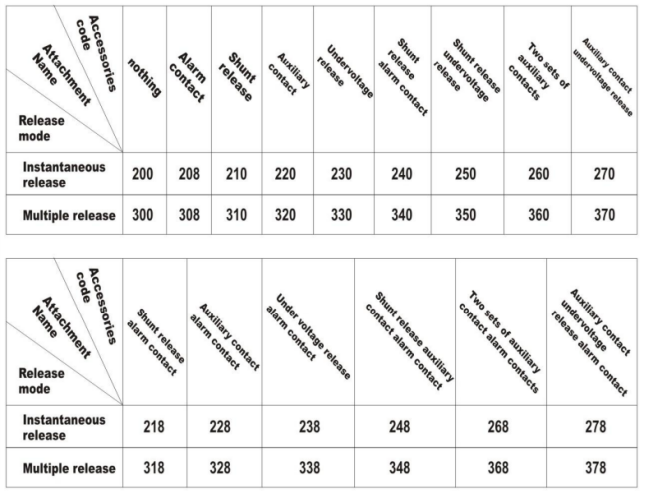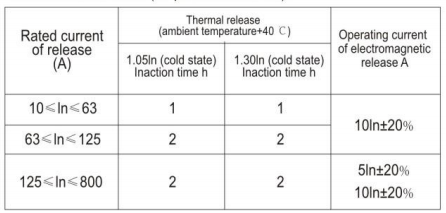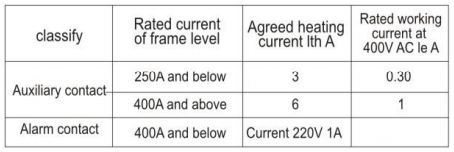NZ-2P plastic shell circuit breaker
Short Description:
Plastic housing circuit breaker
Product details
Plastic housing circuit breaker
1. The circuit breaker is suitable for thefollowing working environments
1. The altitude is below 2000m;
2. The ambient medium temperature is higher than+40℃ (+45℃ formarine products) and not lower than -5℃
3. Be able to withstand the influence of humid air;
4. Can withstandthe impact of salt mist and oil mist;
5. Can withstand the influenceof mold;
6. The maximum inclination is 22.5
7. Reliable operation under normal vibration of the ship:
8. In a medium that is free from explosion hazards and that is notsufficiently corrosive to metals and damaging to insulation, there isno gas or electrical conductivityA place of dust;
9. in a place where there is no rain or snow.
2. Classification of circuit breakers
The model and its meaning are as follows:
Usage code (1)
Release mode and accessory code (see table)Number of poles
Operation mode (2)
Rated limit short-circuit breaking capacity level (3)
Rated current of frame level
Design code
Plastic case circuit breaker
Enterprise code
Note: (1)There is no code for circuit breakers for power distribution.
and circuit breakers for motor protection are indicated by 2.
(2)There is no code for direct operation of the handle;
Electricoperation is indicated by P.
NZ1-125H is 125A;
Note:(1)6A specification only has electromagnetic (instantaneous) type,
(2)Tape ()is not recommended.
2. According to the wiring method, it is divided into three types:
frontpanel wiring, rear panel wiring, and plug-in type;
3. According to the type of overcurrent release, there are two types:
thermal electromagnetic (duplex) type and electromagnetic(instantaneous)type.
4. According to the accessory device, there are two types:
withaccessory device and without accessory device.
Accessory devices include internal devices and external devices:
internal devices include shunt releases, undervoltage releases, auxiliarycontacts,
and alarm contacts, while external devices include rotaryhandle operating mechanisms,
electric operating mechanisms, and soon.

3. Main technical indicators
1.The circuit breaker thermal release has inverse time characteristics:the electromagnetic release is instantaneous, and the characteristicsare shown in the table (for power distribution).

4.Technical data of accessory devices
1. See the table for the rated values of auxiliary contacts and alarm contacts
2. When the applied voltage of the shunt release is between 70% and 110% of therated control power supply voltage, it can reliably open the circuit breaker.
3. When the power supply voltage drops to within the range of 70% - 35% of the ratedoperating voltage of the undervoltage release, the undervoltage release can reliablyopen the circuit breaker, When the power supply voltage is lower than 35% of therated operating voltage of the undervoltage release, the undervoltage release canprevent the circuit breaker from closing; When the power supply voltage is higherthan 85% of the rated wide operating voltage of the undervoltagerelease, the undervoltage release can protect the circuit breaker from reliably closing.



